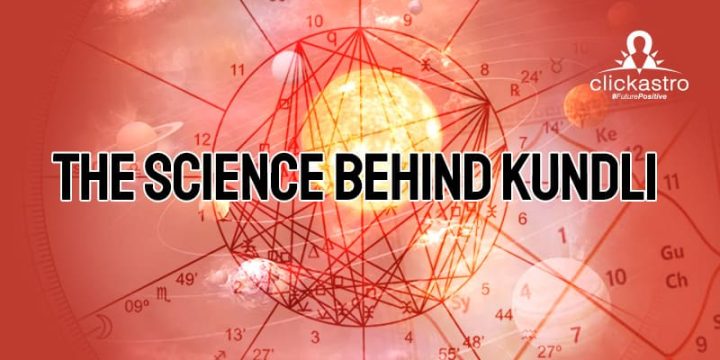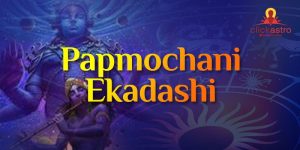Astrology has intrigued humanity for centuries, offering insights into our personalities, relationships, and life paths. One of the key tools in astrology is the
Kundli, also known as a
birth chart or
horoscope. This intricate diagram is a map of the celestial bodies’ positions at the exact moment of an individual’s birth. While some view Kundli as purely mystical, there’s a scientific foundation underlying its principles.
There are elements within Kundli (
कुंडली) that intersect with scientific principles. The calculations based on celestial mechanics, consideration of gravitational influences, exploration of psychological archetypes, and acknowledgment of cognitive biases all contribute to a more nuanced understanding of Kundli from a scientific perspective.
Kundli provides a framework for self-reflection and understanding, tapping into the realm of human consciousness that science might not fully capture. It offers a unique lens through which to explore the intricate dance between the cosmos and human existence. Just as the Moon’s gravitational pull affects tides, astrological patterns could theoretically impact subtler aspects of human life. These influences reveal the intricate interplay of cosmic forces and individual experiences.
In this blog, we’ll explore the science behind free Kundli and how it unveils astrological patterns.
Celestial Mechanics and Planetary Positions
Astrology’s foundation rests upon the precise positions of celestial entities—the planets, the Sun, and the Moon—at a particular moment and location. This tenet is intricately linked to celestial mechanics, a discipline in astronomy that comprehends the motions of celestial bodies. Governed by fundamental laws of physics, these bodies traverse their orbits in predictable patterns. Modern astronomical advancements enable the precise calculation of their positions, offering the underpinnings for creating Kundli.
Through meticulous calculations, astrologers establish birth charts that capture the snapshot of planetary configurations during a person’s birth. The intricate interplay of these cosmic elements forms the canvas upon which
astrological interpretations are painted. While the scientific community may debate the direct influence of these positions on human lives, the celestial mechanics aspect provides a structured framework for astrological analysis. This synergy of ancient wisdom and scientific calculations empowers astrologers to discern potential correlations between celestial arrangements and individual traits, offering a perspective that transcends the mystical.
Gravitational Influences and Energy:
Gravity, an omnipresent force shaping celestial motions, emerges as a significant element within astrology. Planetary bodies, not merely inert orbs, emit energy and exert gravitational forces, forging intricate connections between them. While these forces are dwarfed by Earth’s influences, they possess relevance. Although their effects on human lives may seem faint, they remain far from negligible. Intriguingly, a faction of researchers posits that these subtle gravitational influences might interplay with intricate human systems like biochemistry and neural pathways.
While the link between celestial forces and individual traits remains debated, the notion finds parallel in scientific theories about the interconnectedness of the cosmos. It is within this context that astrology introduces a bridge between the macrocosm and the microcosm. While the scientific community may demand empirical validation, the consideration of gravity’s subtler impacts enriches the discourse. These subtle forces, ever-present yet not fully comprehended, invite exploration into the potential interplay between cosmic energies and the intricate tapestry of human existence, a realm where astrology sheds light on the intersection of forces both seen and unseen.
Synchronization of Life Cycles:
Astrology embraces the principle “as above, so below,” positing a profound connection between celestial phenomena and earthly events. Advocates of astrology contend that celestial movements resonate with occurrences on Earth, extending to human life cycles. The lunar cycle’s impact on tides stands as a tangible illustration of cosmic influence on terrestrial realms. Similarly, the notion that celestial bodies might exert subtler influences on human emotions isn’t implausible, given the interconnectedness observed across nature.
The birth chart, meticulously charting planetary arrangements at birth, crystallizes this synchronization between cosmic dynamics and pivotal life events.
Astrologers explore how these celestial configurations could intertwine with personal experiences, influencing traits, challenges, and opportunities. While skeptics question causation, the parallelism between celestial cycles and natural rhythms underscores astrology’s unique lens for understanding human existence. It invites consideration of influences extending beyond the physical and tangible, offering insights into the intricate dance of celestial and earthly forces, shaping the narrative of each individual’s journey.
Psychological Archetypes and Symbolism
In astrology, the correlation between astrological signs and psychological archetypes forms a compelling facet. Each sign embodies distinct traits and symbols that frequently strike a chord with human psychology and personality traits. The discussion goes beyond a simple cosmic alignment, delving into the nuanced realm of symbolism. While the direct causality between celestial bodies and individual characteristics remains a point of contention, the archetypes’ significance isn’t diminished.
These archetypal associations offer a lens through which human behavior and tendencies can be examined. Much like how myths and stories illuminate the intricate facets of the human experience, astrology utilizes these symbols to explore the complexities of personalities and traits. Whether or not celestial bodies have a tangible impact, the symbolic connections foster an intriguing dialogue between cosmic narratives and individual psychology. This symbiotic relationship between celestial symbolism and human understanding reveals a rich tapestry where astrology seeks to decode the intricate interplay between cosmic forces and the intricate landscape of human nature.
Confirmation Bias and Self-Fulfilling Prophecies:
Astrology’s psychological dimension cannot be overlooked. A significant aspect is confirmation bias, a cognitive tendency where individuals are more inclined to notice and remember events that align with their existing beliefs. In the context of astrology, this bias can influence how people interpret and validate astrological predictions. When predictions align, they resonate more profoundly due to this inherent bias, even if other instances are disregarded.
Moreover, the placebo effect introduces another layer. The mere belief in astrological forecasts could spur changes in behavior and mindset, leading to self-fulfilling prophecies. Individuals might unconsciously align their actions with astrological advice, thus inadvertently shaping outcomes. This intricate interplay of psychology and belief highlights astrology’s capacity to influence perceptions and behavior.
While these phenomena raise questions about astrology’s scientific validity, they also underscore the human tendency to seek patterns and meaning in life. The recognition of confirmation bias and self-fulfilling prophecies prompts a thoughtful examination of how beliefs, perceptions, and actions intersect, transcending astrology’s mystical allure to encompass the intricacies of human cognition and influence.
In conclusion, the science underlying free Kundli encompasses a fusion of disciplines, including celestial mechanics, gravitational interactions, psychological archetypes, and symbolic interpretations. Although astrology doesn’t adhere to traditional scientific methods, it presents a distinct lens through which to perceive human nature and the rhythms of existence.
While astrology’s standing as a precise science remains debated, its role in offering a distinct perspective on life’s intricacies cannot be dismissed. The amalgamation of celestial mechanics and human psychology opens avenues for contemplation about the intricate interplay between cosmic forces and individual attributes. Whether individuals fully embrace astrological insights or approach them with skepticism, delving into the science behind Kundli encourages a deeper comprehension of the fascinating connections linking the universe and human life.
Ultimately, exploring the underlying principles of Kundli serves as a reminder that the cosmos and human experience share an intertwined narrative, highlighting the perpetual quest to fathom the mysteries of existence from both empirical and contemplative viewpoints.










We love you guruji.I need more help from you.
అర్థంచేసుకుని చాలా మంది కీతెలియపరుస్తున్నాను